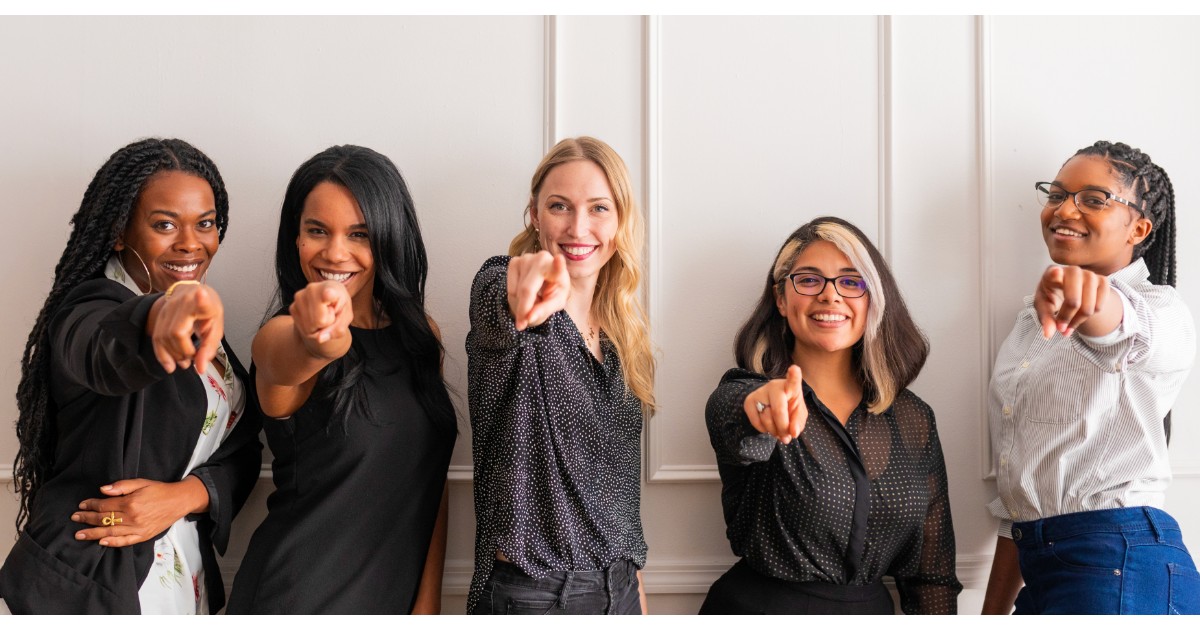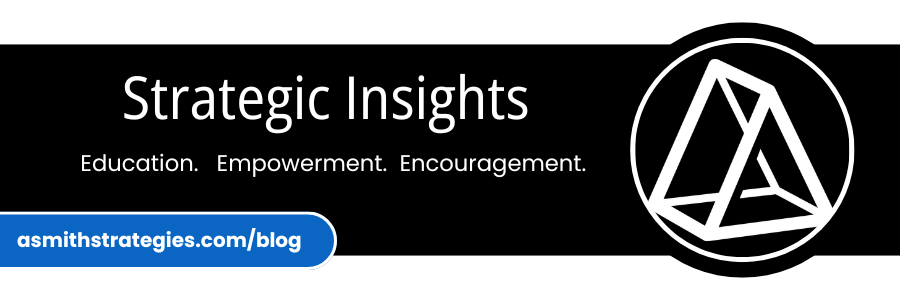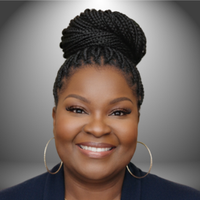
I run a small accounting practice. I recently rebranded, but I’ve operated full-time under my parent company for over 20 years.
Before that, I trained at several high-profile consulting firms where client engagement wasn’t just about delivering the service itself, it was about scope management, expectation-setting, communication, and boundaries.
I also mentor new bookkeepers and coach women entrepreneurs who provide professional services. And across every role I’ve held, one hurdle comes up over and over again:
Money mindset.
Not just your own money mindset.
The money mindsets of the people you serve.
Money is an extremely complex construct. It is shaped by life experiences, stress, culture, beliefs, trauma, fear, scarcity, entitlement, and dozens of invisible variables that show up in the way people behave around invoices, discounts, scope, fees, and value.
And here’s the truth most service-based entrepreneurs learn the hard way:
Never assume anyone sees, values, uses, manages, or understands money the way you do.
Not your clients.
Not your prospects.
Not even the people closest to you.
And no matter how much you explain your logic, your numbers, or your rationale, they’re still operating from their internal money model - not yours.
That’s why one of the first pieces of advice I give to anyone building a service business is simple:
Your job is not to change someone’s money mindset. Your job is to create a clear, mutually understood agreement that each party can honor. Nothing more, nothing less.
This principle alone can solve half the conflicts in service-based businesses. (And honestly, it would solve half the conflicts in people’s personal lives too.)
A few examples:
- Don’t assume that working “for free” now will lead to someone happily paying you later—unless that expectation is explicitly stated in writing.
- Don’t assume someone will value your “discount” or be more appreciative of you because you tried to lighten their burden.
- In fact, a discount usually teaches people exactly what price point to expect from you moving forward.
- And don’t assume your generosity will be interpreted as generosity. Many people interpret it as “normal.”
To illustrate this, I want to share a post I recently saw in a bookkeeping group. It was written by a new bookkeeper - someone who is clearly talented, committed, and eager to do right by their clients. Their situation is both painful and incredibly common.
Here’s what they wrote:
“So… I have a client that I am beginning to dread when she emails me or when I have to see her every week to exchange paperwork. She was my first client, and because I had limited experience, I actually worked about 40 hours over a course of a couple months for her for free cleaning up her books. I don’t regret this, as I learned a lot and feel I was paid in ‘knowledge.’
When I finally asked to start getting paid, as another courtesy, I undercut myself pretty significantly… and now I’m beginning to feel like she doesn’t value my services or my worth.
After working with her for 1 year at the low rate, I restructured my business into packages and presented it to her, and to soften the blow, I threw in extra services not regularly included. Trying to be VERY generous and kind, knowing how stressed she is.
Now, ever since I presented the new agreement (which doesn’t even start until December), she’s been snippy, overwhelmed, negative, and questioning my already-low pricing—even though she has $40k in the bank.
She’s asked me to stop sending monthly financials thinking that’ll eliminate the $200/mo fee. I’ve explained twice that the fee isn’t just for reports.
She signed the new engagement letter but is now questioning auto-payments because she doesn’t want me to incur credit card fees.”
When I say I could teach an entire nine-week series on client engagement from this one post, I’m not exaggerating.
There are at least six hard-earned lessons service providers need to pull from this:
Key Lessons Every Service-Based Entrepreneur Should Take From This Scenario
1. Free work establishes value permanently.
People rarely “upgrade” their perception of your worth voluntarily. They anchor to the first number you gave them - even if it was zero.
2. Undercharging attracts high-demand, high-stress clients.
People with the strongest scarcity fears often also require the most support. And they cling the hardest to discounts.
3. The longer you delay real pricing, the harder the adjustment becomes.
Twelve months of a low rate conditions a client to believe that is the true value.
4. Adding extra services to soften a price increase actually erodes boundaries.
It teaches the client that the new price still isn’t enough… because you padded it with extras.
5. Clear written agreements aren’t optional. They’re your protection.
This bookkeeper eventually used an engagement letter - but only after months of scope creep, unpaid work, and unclear expectations.
6. A client’s personal money story is not your business.
Whether they have $40k or $4 doesn’t matter. Their stress isn’t your responsibility. Your job is to deliver the service you agreed to - professionally, consistently, and within scope.
So what should the new bookkeeper do?
Honestly? The issue isn’t the client.
This is a boundary problem, not a personality problem.
And these patterns tend to follow you into your second, third, and fourth client until you fix them. That’s why I use posts like this as teaching tools for the bookkeepers and service-based entrepreneurs I mentor and coach.
Because once you understand money mindset differences… Once you accept that clients come with their own money stories… Once you stop taking their reactions personally…
You can finally set clean boundaries, enforce scope, and build a profitable service business without resentment.
Final Thought
In professional services, your success has far less to do with your technical skill and far more to do with how you navigate the money mindsets of the people you serve.
This is the real work.
And the earlier you learn it, the faster your business grows—and the healthier your client relationships become.
Want to stop guessing and start building a business with clear and realistic revenue targets? Download my FREE Revenue Roadmap™ Guidebook and Bonus Video Walkthrough. This 5-step framework will help you calculate your business's true earning potential so you can build a strategy that's based on time, capacity, and real numbers.

As a Profit Strategist, I see many brilliant women professional service providers such as coaches, consultants, etc. undervalue their services or get derailed by pricing objections. Pricing isn't just a number—it's a critical component of your overall business strategy.
If you’re ready to move from inconsistent revenue to a predictable profit pipeline, here are five non-negotiable rules for how you approach your service pricing:
1. Pricing is Not Personal. Period.
Never be offended when a prospective client tells you your price is "too high." Their objection is never about you or your value; it’s about their budget, their readiness, or their perceived value of the solution. Your job is to listen, not lower your price. Do not let an objection trigger self-doubt or pricing panic.
2. Compete on Value, Never Price
Your goal is not to win the race to the bottom. Working hard to find clients who will pay the lowest price leads straight to burnout and an inconsistent revenue stream. Instead, work hard to find clients who will pay the highest price because they understand and trust the transformation you provide.
This requires consistently demonstrating your expertise, building a premium brand, and clearly articulating the financial and emotional costs of not solving the problem.
3. Separate Money Mindset from Pricing Strategy
Do not make it your mission to change someone’s money mindset to convince them to buy your service. Money trauma is real. They may be dealing with underlying experiences that are far beyond the scope of a sales conversation.
Instead of fighting for the sale, respect their journey. Direct your energy toward finding prospects who already value specialized, professional services—those who understand the difference between shopping for a commodity and investing in a true partnership.
4. Always Seek the Win-Win
When you structure your pricing and engagement, always aim for a mutual win. This means finding clients who also appreciate and practice a win-win mindset. When there is mutual respect, you create long-term business relationships where clients are happy to pay your rate, refer you enthusiastically, and value your time. This protects your energy and builds a reliable referral network.
5. Be Strategic: Don't Rely on Just One Pricing Model
When considering your rates, look at all the options:
- Value-Based Pricing: What is the specific value your service brings to that particular client? This requires a conversation to understand the urgency, the pain, and the cost of the problem to them. One client may happily pay $XXX, while another pays 50% more based on the urgency of their situation.
- Fixed-Fee Pricing: If you use fixed fees, you must become excellent at scoping the work. Always consider up-front diagnostic work (for which you should be paid) to ensure you accurately scope the project and protect your profit margin.
As a Profit Strategist and full time entrepreneur for over 20 years, I help women transform inconsistent revenue into a predictable profit pipeline with an effective blend of strategic coaching and hands-on financial support.
If you are a woman coach, consultant, trainer, or other type of professional service provider ready to stop guessing and start scaling your profit, let's talk strategy.
Book a FREE Clarity Call and explore how we can build your predictable profit pipeline together.
Want to stop guessing and start building a business with clear and realistic revenue targets? Download my FREE Revenue Roadmap™ Guidebook and Bonus Video Walkthrough. This 5-step framework will help you calculate your business's true earning potential so you can build a strategy that's based on time, capacity, and real numbers.

Unlock Your Business's Potential: 15 Essential KPIs for Service-Based Businesses
If you run a service-based business, you know that success isn't just about hard work; it's about smart work. But how do you know if you're working smart? How do you measure your progress, identify your strengths, and pinpoint areas for improvement? The answer lies in Key Performance Indicators, or KPIs.
KPIs are quantifiable metrics that provide a clear picture of how your business is performing against its goals. Think of them as the dashboard of your business, offering critical data on everything from customer satisfaction to employee productivity. By consistently tracking and analyzing the right KPIs, you can make informed decisions, drive growth, and ensure your business is on the right track.
Before we dive into the 15 essential KPIs, it’s important to remember that every business is unique. The examples and targets provided here are for illustrative purposes only. A KPI that works for a cleaning service with a two-hour delivery time might not make sense for a dry cleaner with a two-day turnaround. The key is to adapt these metrics to fit your specific industry, goals, and customer expectations.
Customer-Centric KPIs: Are Your Clients Happy?
Your customers are the lifeblood of your business. These KPIs focus on measuring their satisfaction, loyalty, and how effectively you're meeting their needs.
1. Customer Satisfaction Score (CSAT)
How happy are your customers? This is the most direct way to find out.
- The Question: Do your customers feel satisfied with the service you provide?
- The Formula: (Number of satisfied customers / Total number of customers surveyed) * 100
- The Example: A CSAT score of 85% means that 85% of your surveyed customers are satisfied with your service.
2. Net Promoter Score (NPS)
This metric goes beyond satisfaction to measure loyalty. Would your customers recommend you to others?
- The Question: How likely are your customers to be brand advocates?
- The Formula: (Number of Promoters - Number of Detractors) / Total Number of Respondents * 100
- The Example: An NPS of 50 indicates that you have a healthy percentage of promoters who are likely to spread positive word-of-mouth.
3. Service Level Agreement (SLA) Compliance
If you've promised a certain level of service, are you delivering?
- The Question: Are you meeting your service commitments, like response times or delivery deadlines?
- The Formula: (Number of requests met within SLA / Total number of requests) * 100
- The Example: 95% compliance with a 24-hour response time SLA shows that you consistently meet your promises to customers.
4. Average Service Delivery Time
Efficiency is key to customer satisfaction. How long does it take you to get the job done?
- The Question: Is there a bottleneck in your process that’s slowing you down?
- The Formula: Total time to deliver services / Total number of service requests
- The Example: An average delivery time of 2 hours can be a great benchmark for a home cleaning business that prides itself on speed.
5. First-Time Fix Rate (FTFR)
Nothing is more frustrating for a customer than a service that requires a second visit.
- The Question: Are you getting it right the first time, every time?
- The Formula: (Number of service requests resolved on the first visit / Total number of service requests) * 100
- The Example: An FTFR of 75% shows that you're resolving a majority of issues on the first attempt, which builds trust and reduces costs.
6. Complaint Resolution Time
When things go wrong, how quickly do you make them right?
- The Question: How fast are you addressing and resolving customer complaints?
- The Formula: Total time taken to resolve complaints / Total number of complaints
- The Example: An average resolution time of 24 hours demonstrates a commitment to quickly and effectively handling customer issues.
Business Health KPIs: Is Your Company Thriving?
These KPIs give you a holistic view of your business's financial and operational health. They help you understand profitability, efficiency, and growth.
7. Repeat Business/Retention Rate
Acquiring new customers is expensive. Retaining them is a sign of a strong business.
- The Question: What percentage of your customers are coming back for more?
- The Formula: (Number of repeat customers / Total number of customers) * 100
- The Example: A 70% retention rate indicates that a large portion of your clientele is loyal and satisfied.
8. Average Revenue per User (ARPU)
Are you getting the most out of your existing customer base?
- The Question: How much revenue does each customer generate, and can you increase that through upselling or cross-selling?
- The Formula: Total revenue / Total number of customers
- The Example: An ARPU of $150 per month suggests a healthy customer value.
9. Service Profitability
Is the service you're providing actually making you money?
- The Question: What is your profit margin for each service?
- The Formula: (Total revenue - Total cost) / Total revenue
- The Example: A 40% profit margin shows that after all expenses, a significant portion of your revenue is profit.
10. Cost per Service Request
How much does it cost you to deliver a single service?
- The Question: Are there ways to reduce your costs without sacrificing quality?
- The Formula: Total cost of delivering services / Total number of service requests
- The Example: A cost of $50 per service request helps you understand your baseline expenses and identify areas for efficiency.
11. Service Revenue Growth Rate
Is your business growing, shrinking, or staying stagnant?
- The Question: Is your service revenue increasing over time?
- The Formula: ((Current year revenue - Previous year revenue) / Previous year revenue) * 100
- The Example: A 15% revenue growth rate year-over-year is a strong indicator of a healthy, expanding business.
12. Service Availability/Uptime
This is especially critical for any business with an online booking system or a digital platform.
- The Question: Is your service always available when your customers need it?
- The Formula: (Total uptime / Total time) * 100
- The Example: 99% uptime for an online booking system means your customers can almost always book your services without interruption.
13. Conversion Rate
How effective are your sales and marketing efforts?
- The Question: What percentage of your leads are you converting into paying customers?
- The Formula: (Number of bookings / Number of leads) * 100
- The Example: A 20% conversion rate from leads to bookings shows that one in five of your potential customers becomes a paying client.
Employee & Operational KPIs: Is Your Team Working Smart?
Your team is your most valuable asset. These KPIs measure their productivity and satisfaction, which directly impacts the quality of your service.
14. Employee Utilization Rate
Are your employees' skills and time being used effectively?
- The Question: Are your employees spending their time on productive tasks?
- The Formula: (Total productive hours / Total available hours) * 100
- The Example: An 80% utilization rate shows that your team is productive and that you are efficiently allocating your resources.
15. Employee Satisfaction/Engagement
Happy employees lead to happy customers.
- The Question: Are your team members satisfied with their work?
- The Formula: (Number of satisfied employees / Total number of employees surveyed) * 100
- The Example: An employee satisfaction score of 85% indicates a positive work environment, which often translates to higher-quality service delivery.
Putting It All Together
Tracking these 15 essential KPIs is more than just crunching numbers; it's about building a data-driven culture in your business. By consistently measuring what matters, you'll be able to identify opportunities, solve problems before they escalate, and make strategic decisions that lead to sustainable growth.
Remember, the goal isn't just to track these numbers but to use them to tell a story about your business's journey. What are your KPIs telling you? Are they pointing to a need for better customer service, a more efficient process, or a more engaged team? Use these insights to refine your strategy and unlock your business's true potential.
Want to stop guessing and start building a business with clear and realistic revenue targets? Download my FREE Revenue Roadmap™ Guidebook and Bonus Video Walkthrough. This 5-step framework will help you calculate your business's true earning potential so you can build a strategy that's based on time, capacity, and real numbers.

The Hidden Cost of Bad Clients: Why a Full Roster Doesn't Mean Full Pockets
I've heard it countless times from successful, service-based entrepreneurs: "I'm busier than ever, but I'm still not making the profit I should be." It’s a feeling of constant motion without real financial progress. And more often than not, it’s not because of a lack of clients, but because of the wrong ones.
The truth is, while every client brings in revenue, not every client is profitable. In fact, some can be a major liability, quietly costing you far more than you ever invoice them. They can be a drain on your energy, a black hole for your time, and a roadblock to the financial freedom you’re working so hard to secure.
This blog post is your guide to identifying and handling these clients. I’ll walk you through a comprehensive framework to not only mitigate the damage of bad clients already on your roster but also to develop proactive strategies to avoid them in the future.
Beyond the Invoice: The True Cost of an Unprofitable Client
When I talk about an "unprofitable client," I’m not just talking about a client who pays a low price. I'm talking about a client who, when you account for all the hidden costs, ends up costing your business money, time, or both.
The invoice they pay might look decent, but it doesn't account for the emotional and administrative labor required to serve them. Think about the client who sends a dozen emails a day, demands a phone call for every minor update, or calls you on the weekend. This emotional drain and mental load are a real cost that can lead to burnout and poor work quality for all of your clients.
Furthermore, there is the administrative time lost. This is the time you spend chasing down late invoices, rewriting contracts due to scope creep, or managing endless rounds of revisions. It's the unpaid work that adds up, a silent tax on your business's efficiency and profitability.
Most critically, there is the opportunity cost. Every hour you spend on a high-maintenance, low-margin client is an hour you can't spend on a high-value, high-profit client. It's an hour you could have used for marketing to your ideal audience, developing a new service, or taking a much-needed break to recharge. Your client roster is your most valuable asset, and a bad client can take up space that could be generating real wealth.
The Client Profitability Playbook: A Guide to Building Your Ideal Roster
Building a profitable client list isn't about luck; it's about strategy. This playbook provides a holistic set of guidelines to protect your time, energy, and bottom line, whether you're vetting new prospects or managing existing relationships.
1. Implement a Proactive Vetting Process
Your first line of defense is a robust screening process. This is where you set expectations and filter out potential issues before they become problems.
Financial Alignment First: For a strictly transactional consumer, negotiating a price is a default behavior because they view a service as a commodity. But for a consumer who understands the value of professional services, a price isn't just a number—it's a reflection of your expertise, your time, the professional relationship you establish, and the transformation you provide. Your job isn't to teach a transactional consumer how to be a better consumer of professional services. It’s a losing proposition to try and convince them of your worth. Instead, your goal is to find the prospects who already understand and value what a professional partnership entails.
Start with a clear, non-negotiable pricing structure. A major red flag is a potential client who wants you to customize a service package to fit their budget—for example, by carving out services or adjusting the price to make it more affordable. A small business cannot be profitable and scalable if every service is a one-off negotiation. Your business is not an à la carte menu designed for a discount. The less replicable your service delivery processes, the less profitable you'll be as a professional service provider because you'd have to reinvent the wheel for each client. Use a simple discovery call or a detailed intake form to understand their budget and expectations upfront. This helps you quickly assess if their financial reality aligns with your service model, saving you from wasted time, frustration, and loss profits.
The "Good Fit" Filter: Go beyond just a basic client profile. What are the core values, preferred communication styles, and work habits of your best clients? Do they trust your expertise? Do they pay on time without prompting? When a potential client’s characteristics or initial interactions don't align with this "good fit" persona, see it as a clear signal to pass. Being strategic about who you work with frees up invaluable space for clients who truly value your services.
Listen to Your Gut: Your intuition is a powerful, often overlooked, business tool. It's that subtle feeling you get when a potential client’s initial questions are all about price, or they refuse to complete a detailed intake form. Pay attention to these early "red flags"—they often serve as crucial warnings that can save you from a major headache down the line. For example, if a prospect pressures you to skip a discovery call and just send a proposal, your gut might tell you they don't value the collaborative process. In that moment, trusting your intuition and respectfully declining can save you from months of communication issues. As difficult as it might be, walking away is always an option.
2. Establish a Comprehensive Onboarding Process
The first act of your business relationship is your onboarding process. This is where you put your boundaries and systems into practice.
Your Contract as Your Ally: Your service agreement is your first and strongest line of defense. Include specific clauses addressing common pain points like scope creep, revision limits, and payment terms (including late fees). Make it explicitly clear that these are non-negotiable from the very beginning. When a client requests work outside the original scope, you can calmly refer back to the contract and provide a new proposal for the additional work.
Set Your Workflow Protocols: This is where you create a clear system for how work gets done. You can define your preferred communication channels (e.g., email, project management software) and your standard response times. For a client who tends to text you at all hours, you might state, "To ensure I can give your project my full attention, all project-related communication will be managed via our project management tool during business hours (9 AM - 5 PM EST, Monday-Friday). I aim to respond to all inquiries within 24 hours." This sets a clear expectation and helps manage accessibility.
Foster a Collaborative Partnership: Setting boundaries isn't about building walls; it means creating a structured environment where both you and your client can thrive. A truly collaborative space benefits everyone by reducing friction and enhancing productivity. I recommend implementing tools like a private client portal or a dedicated project management system. This provides a single source of truth for all communication, deliverables, and feedback, preventing crucial information from getting lost in endless email chains or scattered messages. Use these tools not just for communication, but for clear task management. Clients can see project progress, upcoming milestones, and what information is needed from them. This transparency reduces anxiety and prevents the need for constant check-ins.
3. Leverage Administrative Systems for Control
Automated administrative systems are your secret weapon against time-consuming conflicts and chasing. They enforce your boundaries without requiring your constant emotional energy.
Automated Late-Fee Invoicing: Stop manually chasing payments. I recommend implementing invoicing software that automatically sends polite reminders before an invoice is due, a notification on the due date, and then applies a late fee if payment is delayed. Quickbooks Online can do this - It is all in the set up. This removes the emotional burden of chasing money and ensures your policy is a consistent enforcement of your terms.
Project Management Automation: Automate routine tasks and reminders within your project management system. This ensures that deadlines are visible to both parties, approvals are tracked, and nothing slips through the cracks, minimizing client-generated crises. Simple-to-use and reasonably priced applications like Trello or Evernote can be game-changers when it comes to automating and coordinating client work.
4. The "Price-Out" Strategy
For an existing client who has proven to be a consistent drain on your resources despite your best efforts, the "price-out" strategy is an effective tactic.
Strategic Rate Adjustment: This isn't about punishing a client; it's about valuing your time and expertise. If a client is consistently requiring more time, more revisions, or more hand-holding than their current rate justifies, it’s time to raise their rates. I recommend framing this as an adjustment to match increased demand, a refinement of your service offerings, or a new premium tier that aligns with the level of support they require.
Two Potential Outcomes: Either they will agree to the new, higher rate, making them a profitable client for the extensive time and energy they demand, or they will choose to move on. In either scenario, you win. You either gain a profitable client or free up valuable space for one who is a better fit.
5. Master the Graceful Exit
Sometimes, despite all best efforts, a client relationship simply isn't sustainable. Knowing how to end a partnership professionally and gracefully is a crucial skill for any entrepreneur.
Prioritize Professionalism: The goal is to exit cleanly, without burning bridges or creating unnecessary drama. Keep emotions out of it.
Provide a Clear Transition Plan: Offer to complete outstanding deliverables by a specific date, and, if appropriate, suggest referrals to other service providers - be care here, because you don't want to send bad clients to good referral partners. This shows you are acting in good faith.
The Professional Exit Script: I want to empower you with the language to make this daunting task manageable. Here is a simple, professional email template for gracefully ending a business relationship:
Subject: An update regarding our work together
Dear [Client Name],
This email is to inform you that I have made the decision to restructure my business to better align with my long-term goals and optimize my service offerings. As a result, I will no longer be able to provide [Service Name] after [Date – typically 30-60 days out].
I appreciate the opportunity to have worked with you. To ensure a smooth transition, I will ensure all remaining deliverables are completed by [Date].
Wishing you continued success,
[Your Name]
This template provides a direct, professional way to end a business relationship without confrontation, allowing you to move on with your business and your life.
Your Client Roster is Your Financial Future
A full client roster might feel like success, but it’s only a portion of the financial picture. A profitable client list, on the other hand, is the foundation of a truly sustainable and stress-free business. By identifying and addressing the hidden costs of unprofitable clients, you are not only protecting your time and energy but also making a strategic investment in your future.
You can't build a prosperous business by working with clients who are holding you back. It’s time to move beyond guesswork and emotional decision-making. By applying the strategies in this post, you'll gain the clarity and confidence to curate a client list that serves your financial goals, allowing you to finally start getting paid what you're truly worth.
Want to stop guessing and start building a business with clear and realistic revenue targets? Download my FREE Revenue Roadmap™ Guidebook and Bonus Video Walkthrough. This 5-step framework will help you calculate your business's true earning potential so you can build a strategy that's based on time, capacity, and real numbers.

The Profit Paradox: When More Sales Don't Mean More Money
Most entrepreneurs are conditioned to chase revenue. The conventional wisdom is that a growing top line is the ultimate indicator of success. We celebrate record-breaking sales, and the pursuit of “more” becomes a relentless, all-consuming mission.
But what if the very growth you’re celebrating is quietly eroding your business’s financial health?
This is the Profit Paradox: a seemingly counterintuitive situation where an increase in sales doesn’t translate to an increase in profit. For service-based businesses, this paradox is particularly dangerous. A business can have endless clients and still fail if the financial engine isn't running properly. This is often caused by three silent killers that lurk behind the facade of success.
The Three Silent Killers of Profitability
While there are many factors at play, the Profit Paradox is most often caused by one or more of these three common pitfalls: chasing unprofitable clients, using deep discounts as a primary sales strategy, and scaling too quickly without the proper financial controls.
1. The Lure of Unprofitable Clients
We’ve all heard the phrase, “the client is always right.” While that’s a great service mantra, it’s a terrible financial strategy. Not all clients are created equal. Some are simply more profitable than others.
An unprofitable client can be a time and resource sink. They may require excessive communication, demand customized solutions that aren’t scalable, or negotiate your rates down to a point where your profit margin disappears. They consume your team’s time, distract you from serving your most valuable clients, and ultimately cost you money. Think of it this way: your team’s time is a finite resource. Every hour spent on a high-maintenance, low-paying client is an hour that can’t be spent on an ideal, high-margin client.
Here are some red flags that signal an unprofitable client:
- Excessive Demands: They consistently ask for work outside the original scope without being willing to pay for it.
- Constant Revisions: They insist on endless revisions and changes, turning a one-week project into a one-month nightmare.
- Negotiating on Price: They try to haggle every line item and constantly bring up your competitors’ lower prices.
- Late Payments: They are consistently late on invoices, forcing you to chase them and creating a cash flow crisis.
To truly understand a client's value, you need to think beyond a single transaction. Introduce the concept of Client Lifetime Value (CLV). This metric measures the total revenue you can expect to earn from a single client over the entire course of your relationship. A client who pays you $1,000 for a one-time project is less valuable than a long-term client who pays you $500 per month for ongoing services, even if the one-time project seemed more lucrative at the start.
2. The Discounting Treadmill
Discounts are a powerful tool for short-term sales boosts. They can help you attract new clients and close deals quickly. But when discounting becomes your go-to sales strategy, you're setting yourself up for a race to the bottom.
Continual discounting trains your clients to expect lower rates. It can also devalue your services in their eyes. Most importantly, it can have a devastating effect on your profit margins.
Consider this: if your gross profit margin is 25%, a 10% discount requires a 67% increase in sales volume just to make up the difference in profit. You're working significantly harder just to stay in the same place.
Instead of discounting, which erodes your profitability, use these value-add strategies to close a sale:
- Bundle Services: Offer a "premium package" that includes a discount for combining services. This increases the total value of the sale without cheapening your individual services.
- Offer Tiered Pricing: Introduce a "basic," "standard," and "premium" option. This allows you to serve different client segments and makes your higher-priced services look more reasonable.
- Add More Value, Not a Lower Price: Instead of a 15% discount, offer a free hour of consultation or a bonus deliverable. This demonstrates your value and makes the client feel like they're getting a great deal without you sacrificing profit.
3. The Pitfall of Rapid Scaling
Growth is exciting, but unchecked growth can be fatal. Scaling your service-based business too quickly often means you’re outspending your revenue. This happens for a few reasons:
- Hiring too fast: You bring on new team members before you have the consistent revenue to support their salaries, benefits, and training. The cost of onboarding, training, and managing new people is often underestimated.
- Investing in systems or tools: You purchase expensive software or systems in anticipation of future demand, but that demand doesn't materialize quickly enough.
- Overextending your marketing spend: You pour money into marketing channels that aren't yet generating a positive return, creating a cash flow drain.
Rapid growth can create a cash crunch, even in a profitable business. This is because there is often a significant lag between when you provide a service and when you actually collect the cash from your client. You have to pay your contractors and bills long before your client’s invoice is due.
A Framework for Profitable Growth: Understanding Your Client Mix
To escape the Profit Paradox, you have to shift your focus from revenue to profitability. This requires a deep understanding of your business’s financial data and a strategic approach to your client mix.
Here's a simple framework to get started:
Step 1: Calculate Your Gross Margin Per Client
Stop looking at just the revenue from each client. Instead, calculate the gross margin for each one.
- Gross Margin = Revenue - Direct Costs of Service Delivery
Direct costs include all the expenses directly tied to a specific client project, such as your team's time, any outsourced services, or specialized tools required for that client.
To take this a step further, consider your Fully Loaded Labor Cost. This accounts for not just a team member’s hourly wage but also payroll taxes, benefits, and paid time off. By calculating this, you get a much more accurate picture of the real cost of serving a client.
Step 2: Segment Your Clients
Once you have your gross margin data, group your clients into segments. A simple way to do this is to use an 80/20 analysis, also known as the Pareto Principle.
- The 80/20 Rule: In many businesses, 80% of your profit comes from just 20% of your clients.
Identify your top 20% of clients—the ones who contribute the most to your bottom line. These are your "ideal" or "A-list" clients. Then, identify the bottom 20%—the clients that are a drain on your resources and profitability. To help, you can use a simple spreadsheet template to visualize this.
Here’s a clear action plan for each segment:
- A-List Clients: Identify ways to get more of these clients. Create a referral program, ask for testimonials, and ask them for case studies to use in your marketing.
- B-List Clients: These are your bread-and-butter clients. Look for ways to make serving them more efficient. Could you create a more streamlined process or a standard operating procedure (SOP)?
- C-List Clients: Set a goal to transition or "fire" a set number of these clients per quarter. The time and energy you free up will allow you to focus on more profitable work.
Step 3: Develop a Strategic Plan
Now that you have this insight, you can create a plan to optimize your client mix and get off the Profit Paradox treadmill.
- Create a "Stop Doing" List: Profitable growth isn't just about adding new things; it’s about strategically removing the things that don't serve you. What services are you offering that are a constant drain on your energy and don’t deliver a strong profit margin? What client behaviors are you willing to stop tolerating?
- Raise Your Rates: With a clear understanding of your most profitable clients, you have the data and confidence to raise your rates. Start with new clients, or try it on your C-list clients to see if they transition to a more profitable relationship or gracefully exit.
- Systematize for Profit: Once you know what your most profitable services are, invest in systems and processes to make delivering them more efficient. Can you create templates, automate administrative tasks, or delegate parts of the project to a more junior team member?
Glossary of Terms
- Gross Margin: The profit a business makes after subtracting the direct costs of providing a service or selling a product.
- Client Lifetime Value (CLV): A metric that measures the total revenue a business can expect to earn from a single client over the entire course of the business relationship.
- Fully Loaded Labor Cost: The total cost of an employee, including not just their salary or hourly wage, but also benefits, payroll taxes, paid time off, and other related expenses.
- Cash Crunch: A situation where a business, even a profitable one, does not have enough liquid cash to cover its short-term expenses and obligations.
- 80/20 Analysis (Pareto Principle): The observation that roughly 80% of a business's effects (like profit) come from 20% of its causes (like clients or services).
Your Next Step: From Understanding to Action
Understanding the Profit Paradox is the first step toward building a truly healthy and sustainable business. You've identified the silent killers that may be eroding your profitability—from high-maintenance clients to the perils of discounting—and you have a framework for tackling them.
The next step is to take action.
Putting these insights into practice can feel overwhelming, but you don't have to navigate it alone. My work with clients in 1:1 Profit Strategy Sessions is all about moving from analysis to implementation. It's in these sessions that we dive deep into your unique numbers, identify your most profitable services, and build a customized roadmap for sustainable growth.
Want to stop guessing and start building a business with clear and realistic revenue targets? Download my FREE Revenue Roadmap™ Guidebook and Bonus Video Walkthrough. This 5-step framework will help you calculate your business's true earning potential so you can build a strategy that's based on time, capacity, and real numbers.







